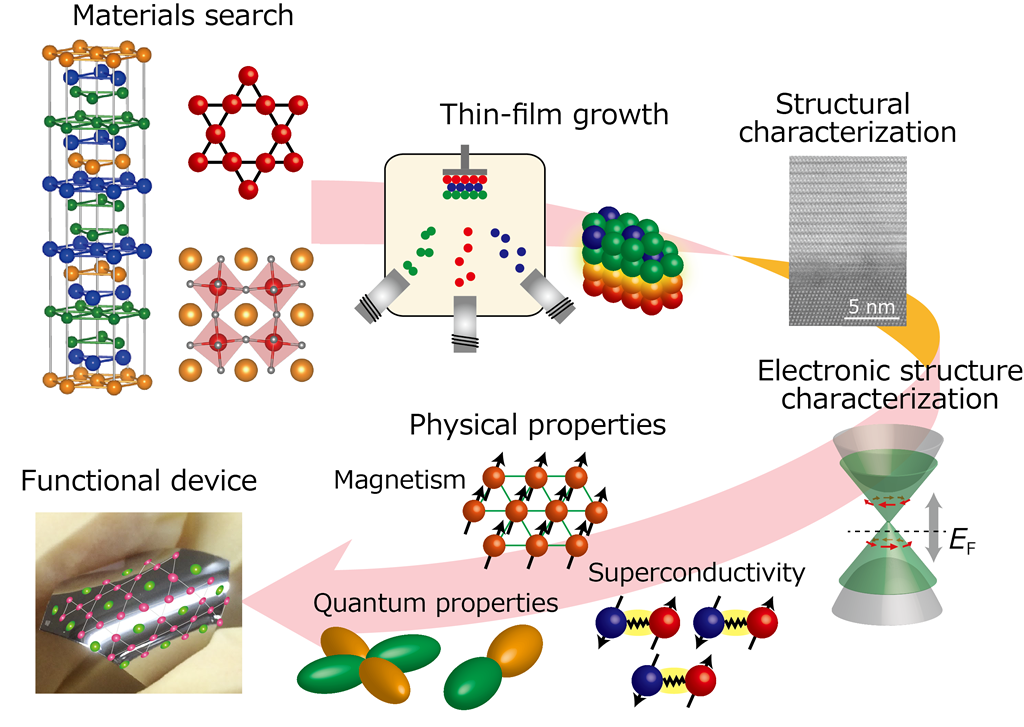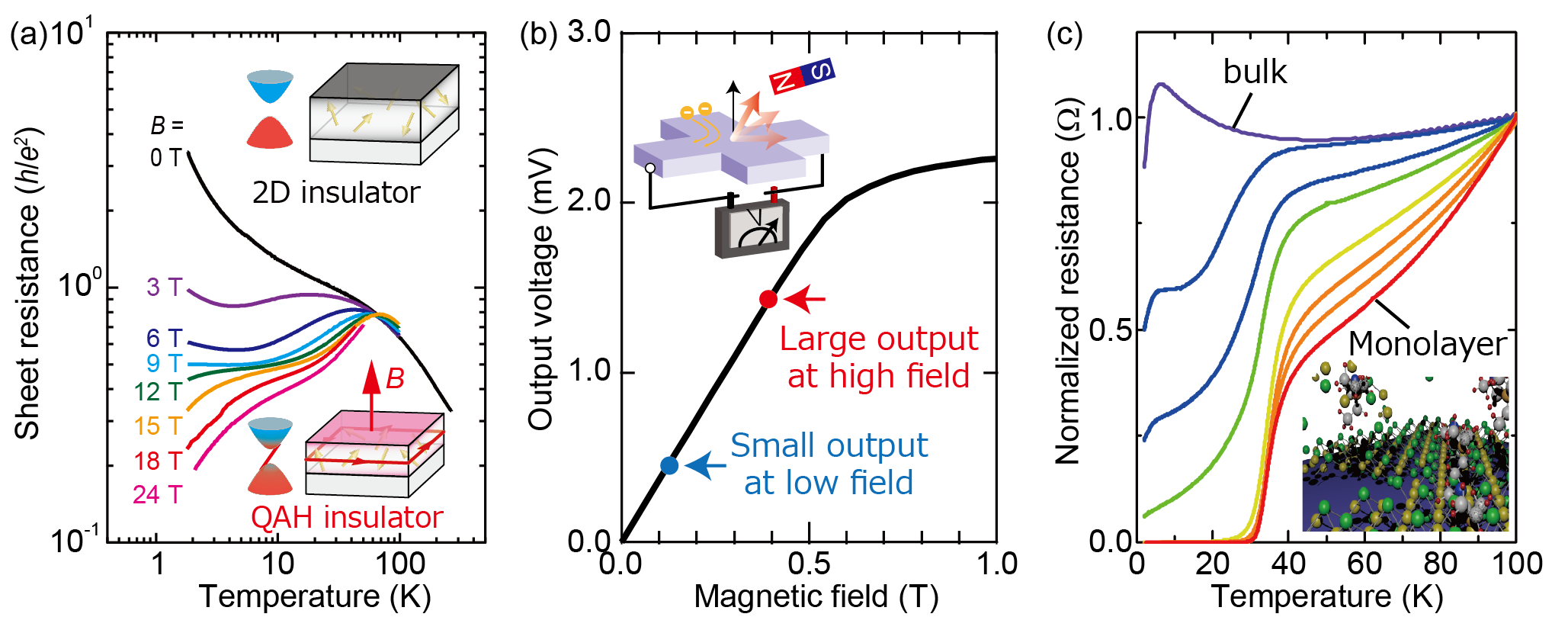Topics
2020.6.1
Condensed-matter physics in thin films and interfaces -Synthesis and Engineering-
Thin Films and Heterointerfaces Research Group
Thin-film synthesis is a core technique for fabricating useful semiconductor, magnetic, and quantum devices in our daily life. In our group, we explore intriguing physical phenomena involving topological transport properties, magnetism and superconductivity by employing thin-film growth techniques such as molecular beam epitaxy, sputtering, as well as pulsed-laser deposition. We also attempt to create novel functional devices based on these exotic physical properties as illustrated in Fig. 1.
In thin-film growth, selecting proper source elements and deposition duration allows us to tune a chemical composition and assemble artificial superlattices and heterostructures at the thickness scale of a few nm. Thermodynamics and reaction kinetics during film synthesis are important factors to create artificial structures absent in nature. In the cutting-edge researches in the areas of condensed-matter physics and materials science, there has been increasing interest in the exploration of new materials and structures, the observation of emergent exotic physical phenomena, and the development of functional devices for future electronics. In this view, thin-film growth approach is one of core techniques that can bridge fundamental physics and applications.

Here, we introduce some of our topical achievements in Fig. 2.
What comes into your mind when you hear “topology”? Some of you who are interested in mathematics and physics may think of a Möbius strip or continuous deformation of a mag into a doughnut. Recently, the term “topology” play an active role in the fields of condensed-matter physics and materials science. One example is a topological insulator (TI). This is a newly recognized class of matters consisting of an insulating interior and a metallic surface state that is characterized by band-structure topology. Towards extracting characteristic features originating from the topological surface state as well as realizing unique functional devices, the atomic-scale formation of thin films, heterostructures, and superstructures of topological materials is effective. With the aid of such thin-film approaches, the metallic surface state can be changed into a two-dimensional insulator by reducing the film thickness (a top inset of Fig. 2(a)) or into a topologically different quantum anomalous Hall state by inducing magnetic interactions (a bottom inset of Fig. 2(a)).
The magnetic Weyl semimetal is another family of topological materials. It is predicted that a large anomalous Hall effect emerges by strong interactions between conducting carriers and magnetism that originates from its unique electronic structure. The anomalous Hall effect produces a Hall voltage perpendicular to the electric current and magnetization in ferromagnetic films. Our team explores a new type of magnetometers (Fig. 2(b)) based on thin films of these materials.
Superconductivity has been attracting researchers’ interest for over a hundred year. There has been recent discovery of new superconducting materials and superconducting properties specific to the thin-film form. For example, the superconducting transition temperature can be substantially elevated by thickness reduction in a layered superconductor FeSe as shown in Fig. 2(c). In addition, superconducting thin films are expected as a platform to realize phase-sensitive devices and quantum computation.
We study condensed-matter physics and materials science based on thin films, heterointerfaces, and superstructures of these exotic materials. Our aim is to engineer materials functionality via synthesizing thin films, characterizing their physical properties, and studying the fundamental physics.


